Two new foldable smartphones have been launched by major brands, aiming to capture the premium market in India: the Samsung Galaxy Z Fold 7 and the Vivo X Fold 5. Both devices push the boundaries of foldable technology, but they prioritize different features. Based on my hands-on experience and detailed comparisons, I will break down how these foldable smartphones compare to help you decide which one is worth your investment.
Design and Build Quality
Both the Samsung Galaxy Z Fold7 and Vivo X Fold 5 have made significant strides in refining the book-style foldable design, achieving impressively slim profiles. The Galaxy Z Fold7 measures 8.9mm when folded and 4.2mm when unfolded, weighing 215 grams. The Vivo X Fold 5 is slightly thicker, measuring 9.2mm when folded and 4.3mm when unfolded, with a weight of 217 grams. The difference is negligible in daily use, but Samsung’s slightly sleeker form factor gives it a premium edge.

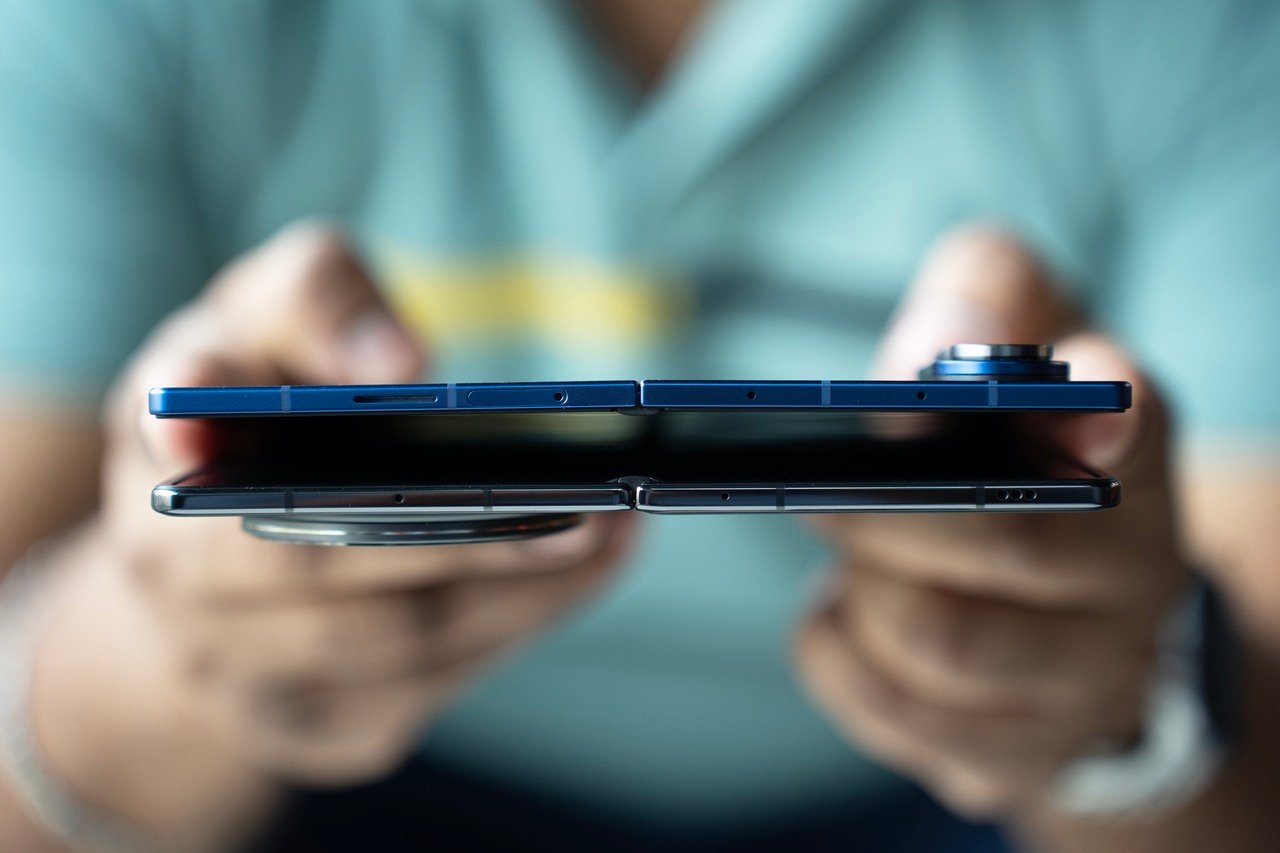
Samsung equips the Z Fold7 with Gorilla Glass Victus 2 on the back and Gorilla Glass Armor on the cover screen, paired with an IP48 rating for limited dust and water resistance. Vivo counters with its 2nd Gen Armor Glass and a superior IP59 rating, offering better dust protection alongside robust water resistance (marketed as IPX8, IPX9, and IP5X). For users concerned about long-term durability, Vivo’s higher IP rating is a significant advantage, particularly in environments prone to dust.
Vivo’s design includes a circular camera hump that stabilizes the phone when placed flat, while Samsung’s camera bumps cause slight wobbling. Both devices feature premium materials, but Samsung’s ceramic finish and titanium frame feel marginally more refined, while Vivo’s glass back feels like a regular smartphone.
Verdict: Samsung wins for its slimmer profile, but Vivo’s superior IP rating and stable design make it a strong contender for durability-focused users.
Display
The display is a critical aspect of any foldable, and both devices deliver stunning AMOLED panels. The Vivo X Fold 5 boasts an 8.03-inch 2K+ LTPO AMOLED inner display (2200 x 2480) with a 120Hz refresh rate and a peak brightness of 4,500 nits. Its 6.53-inch cover display is also AMOLED, with a 1172 x 2748 resolution and matching 120Hz refresh rate. The high brightness ensures excellent visibility even in harsh sunlight, though the screen is noted to be a fingerprint magnet.
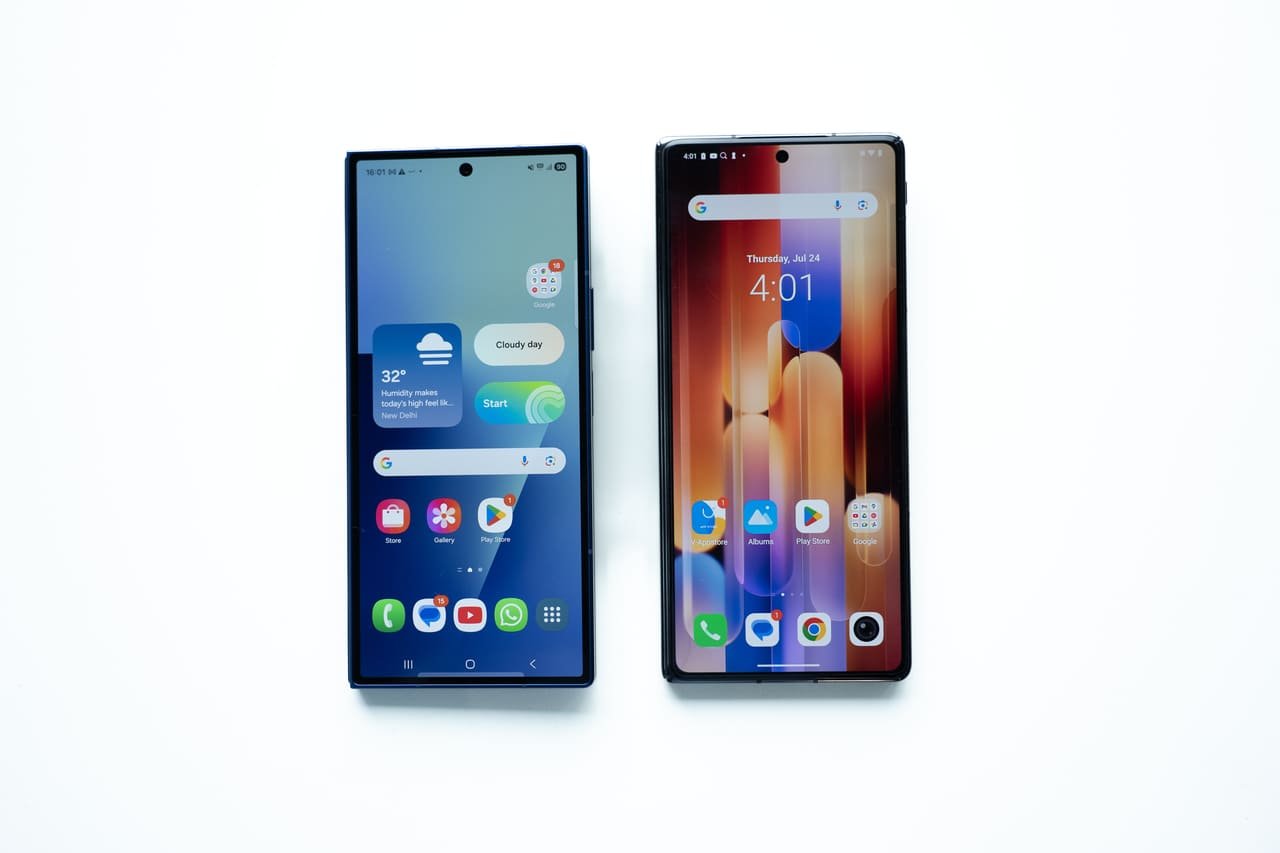
The Galaxy Z Fold7 features a slightly smaller 8-inch Dynamic AMOLED 2X inner display (1968 x 2184) with a 120Hz adaptive refresh rate that drops to 1Hz for power efficiency, peaking at 2,600 nits. Its 6.5-inch cover display (1080 x 2520) also supports a 120Hz refresh rate. While Samsung’s display is sharp and smooth, it falls short of Vivo’s brightness and resolution.
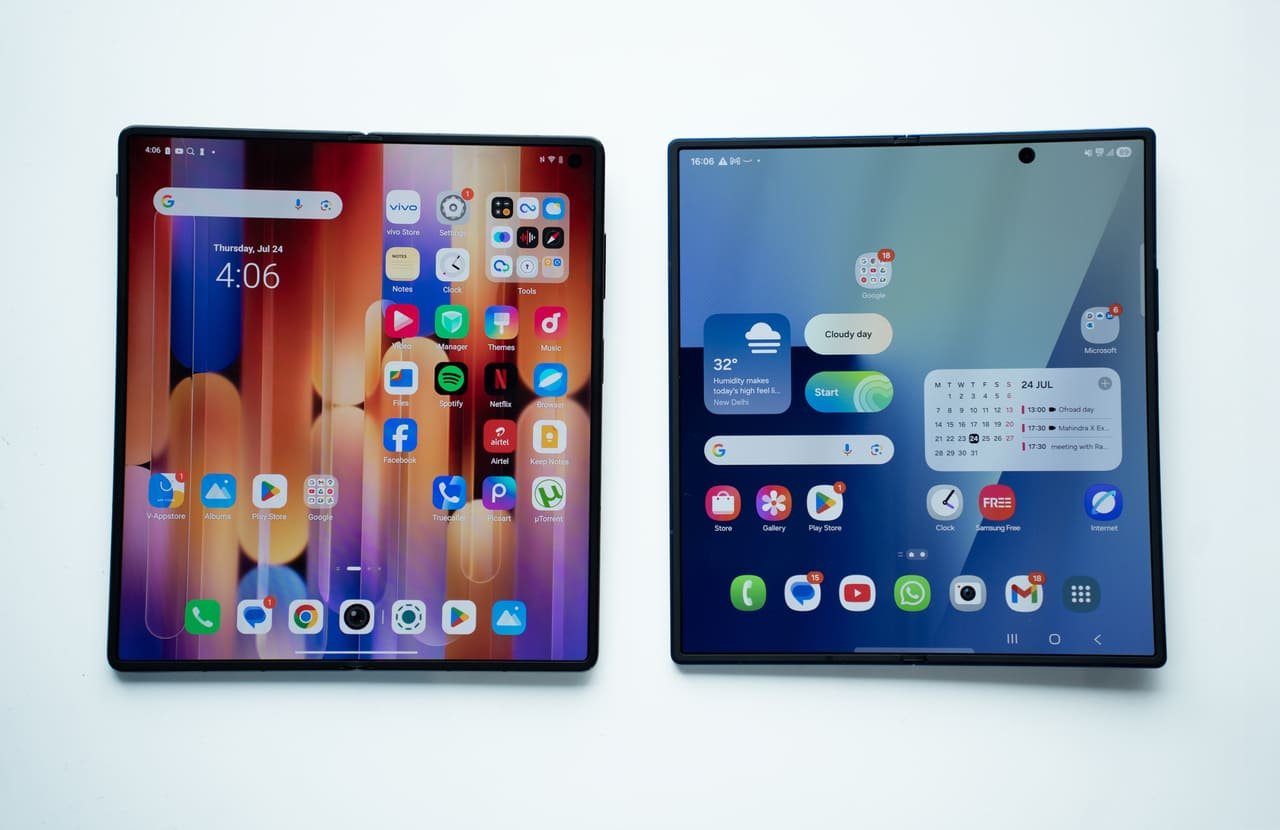
Both phones have noticeable creases, but Vivo’s hinge design makes them less pronounced, and its wider cover screen (21:9 aspect ratio) feels more like a conventional smartphone. Samsung’s Z Fold7 has a narrow design, which sometimes leads to typing errors due to its slim width.
Verdict: Vivo takes the lead with brighter, sharper displays and a more practical cover screen aspect ratio, but Samsung’s adaptive refresh rate offers better power efficiency.
Performance
Performance is where the Galaxy Z Fold 7 pulls ahead. Powered by the cutting-edge Qualcomm Snapdragon 8 Elite (3nm), it delivers top-tier performance with up to 16GB RAM and storage options up to 1TB. There was no lag, even during demanding tasks such as gaming or multitasking, making it perfect for power users.
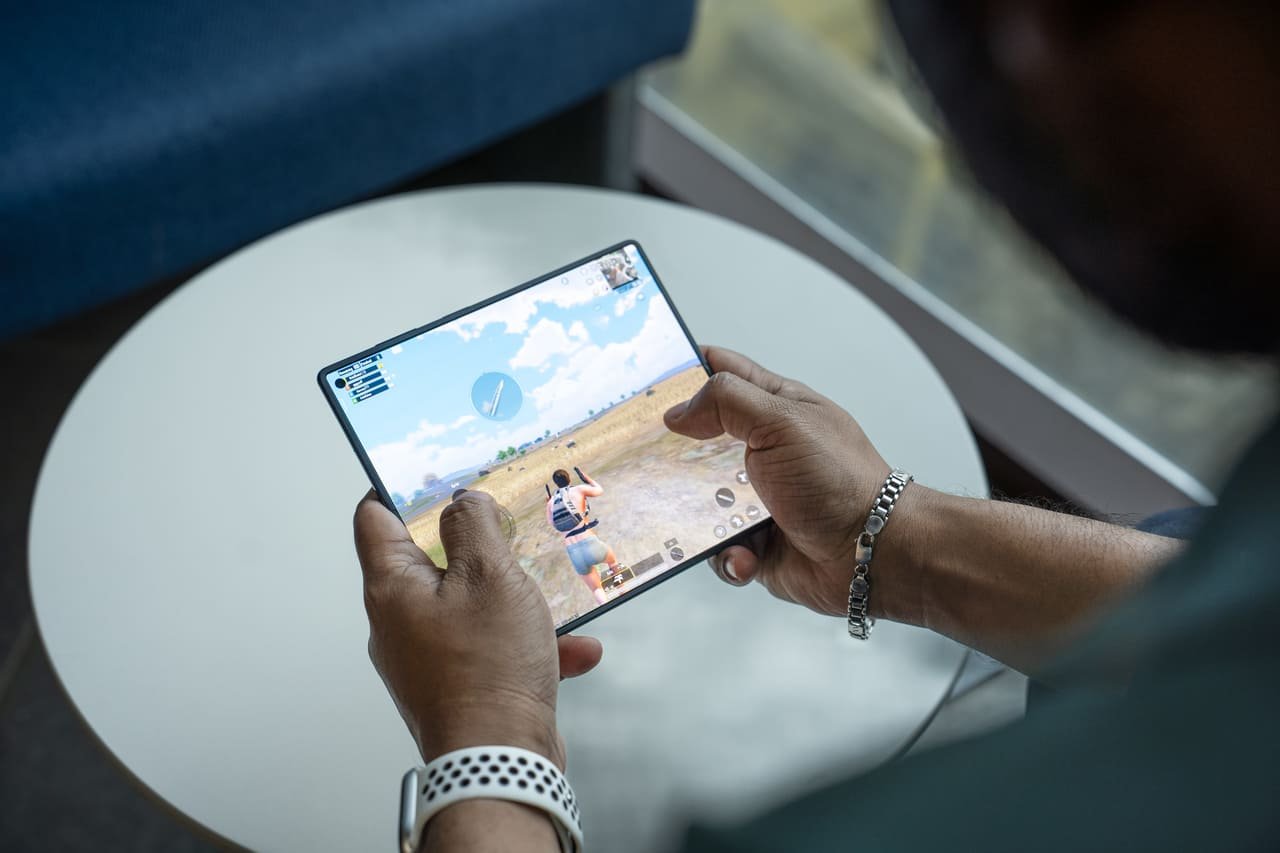
The Vivo X Fold 5, equipped with the Snapdragon 8 Gen 3, is not far behind. Paired with 16GB LPDDR5X RAM and 512GB UFS 4.1 storage, it handles games like BGMI smoothly. However, the Snapdragon 8 Elite in the Z Fold7 offers a slight edge in benchmarks and future-proofing. At times, the X Fold 5 becomes warm during intensive tasks such as navigation or camera use, but this does not significantly affect its performance.
Verdict: Samsung’s Snapdragon 8 Elite gives it a performance edge, but Vivo’s Snapdragon 8 Gen 3 is more than adequate for most users, especially at its price point.
Camera
The camera systems on both foldables cater to different strengths. The Vivo X Fold 5 features a Zeiss-tuned triple 50MP setup: a Sony IMX921 main sensor (f/1.57, OIS), a 50MP ultra-wide (Samsung JN1), and a 50MP 3x periscope telephoto (Sony IMX882, up to 100x digital zoom). Dual 20MP front cameras on both displays ensure sharp selfies and video calls. The Zeiss optics and T* coating deliver consistent, high-quality shots across all lenses, with strong low-light performance and zoom capabilities.
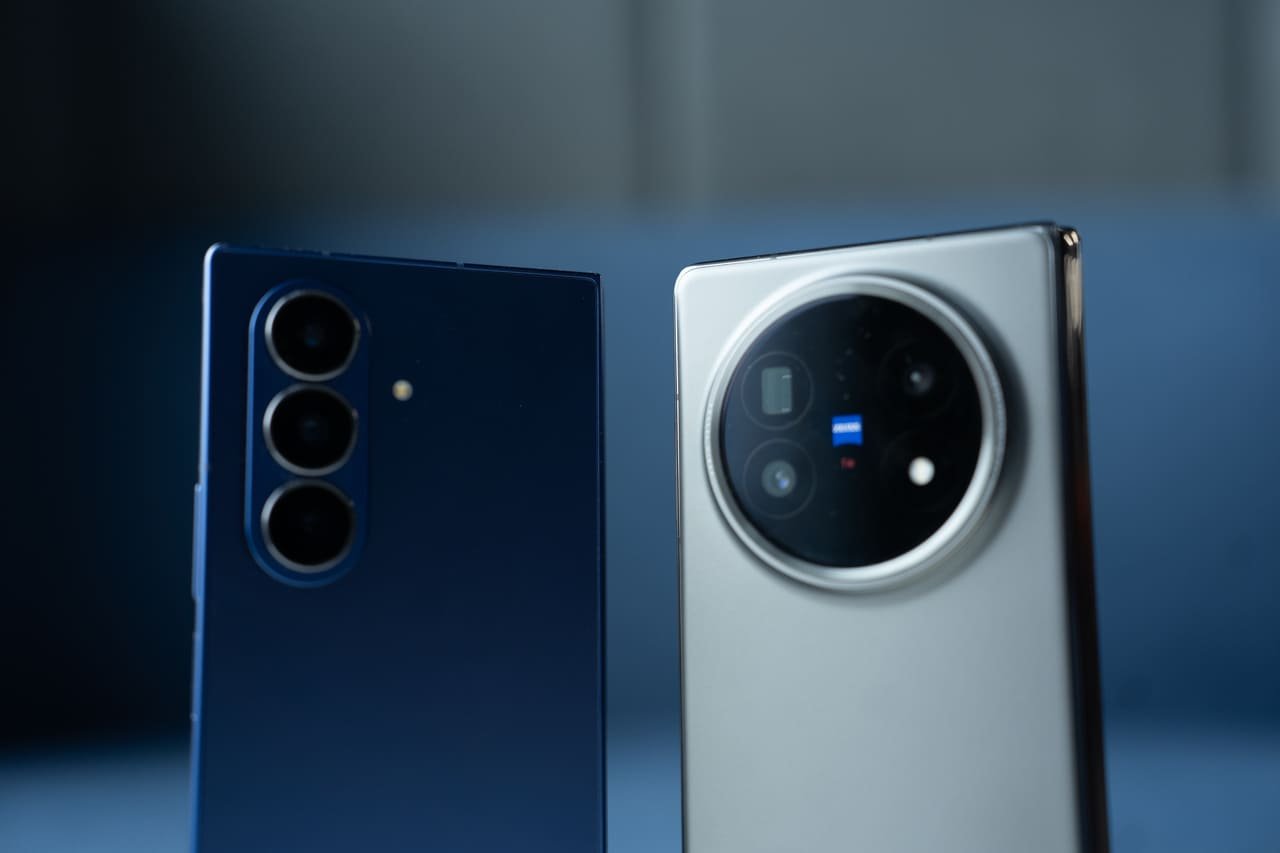
The Galaxy Z Fold7 counters with a 200MP main sensor (f/1.7, OIS), a 12MP ultra-wide, and a 10MP 3x telephoto lens. Its dual 10MP front cameras (cover and inner displays) are less impressive for selfies. While the 200MP sensor excels in detail, especially in well-lit conditions, the supporting lenses are outmatched by Vivo’s higher-resolution ultra-wide and telephoto. Samsung’s Galaxy AI enhances editing capabilities, allowing seamless touch-ups, though edited images carry a watermark.
Verdict: Vivo wins for camera versatility and consistency, especially for zoom and selfies, while Samsung’s 200MP sensor and AI editing appeal to detail-focused users.
Battery Life and Charging
Battery life is a standout feature for the Vivo X Fold 5, which packs a massive 6,000mAh battery, the largest in any foldable. It supports 80W wired charging (full charge in under an hour) and 40W wireless charging, with an 80W adapter included in the box. I achieved up to 1.5 days of battery life with heavy use, making it clearly the best option for endurance.
The Galaxy Z Fold 7, with a 4,400mAh battery, supports 25W wired and 15W wireless charging. It lasts a full day with normal usage but falls short of Vivo’s stamina. Samsung’s slower charging and lack of an included adapter are notable drawbacks. However, Samsung’s power optimization results in comparable efficiency for certain tasks, like video playback.
Verdict: Vivo dominates with its larger battery, faster charging, and included adapter, making it the go-to for users prioritizing endurance.
Software and AI Capabilities
The Galaxy Z Fold 7 runs One UI 8 on Android 16, offering a polished experience optimized for foldables. Samsung promises seven years of OS and security updates, ensuring longevity. Galaxy AI features, like Circle to Search, AI Captions, and advanced photo editing, enhance multitasking and productivity, making it a favourite for users integrated into Samsung’s ecosystem.
The Vivo X Fold 5 runs Funtouch OS 15 on Android 15, with a four-year update promise. While it includes AI features like Smart Call Assistant and AI Captions, it lags behind Samsung in polish and ecosystem integration.
Verdict: Samsung excels with a more refined UI, longer software support, and robust AI features, while Vivo’s software is functional but less future-proof.
Pricing and Value
The Vivo X Fold 5 is priced at ₹1,49,999 for the 16GB/512GB variant, with potential bank discounts bringing it lower. The Galaxy Z Fold7 starts at ₹1,74,999 (12GB/256GB), with higher-end models at ₹1,86,999 (12GB/512GB) and ₹2,16,999 (16GB/1TB). Samsung also offers bank discounts, but Vivo delivers better specs-to-price value.
Verdict: Vivo offers better value with its lower price and included a charger, while Samsung’s premium pricing reflects its software longevity and ecosystem perks.
Conclusion
The Samsung Galaxy Z Fold7 and Vivo X Fold 5 are both exceptional foldables, but they cater to different priorities. The Z Fold7 shines with its slimmer design, powerful Snapdragon 8 Elite, polished One UI, and long-term software support, making it ideal for those deep in the Samsung ecosystem or prioritizing performance and refinement. The Vivo X Fold 5 counters with a larger battery, faster charging, superior camera versatility, and a lower price, appealing to users who value endurance and value for money.
If battery life, charging speed, and camera consistency are your top concerns, the Vivo X Fold 5 is the better pick. If you prioritize software longevity, AI features, and a sleeker design, the Galaxy Z Fold 7 is worth the premium. Ultimately, both devices are the best, and your choice depends on what matters most in your daily use.


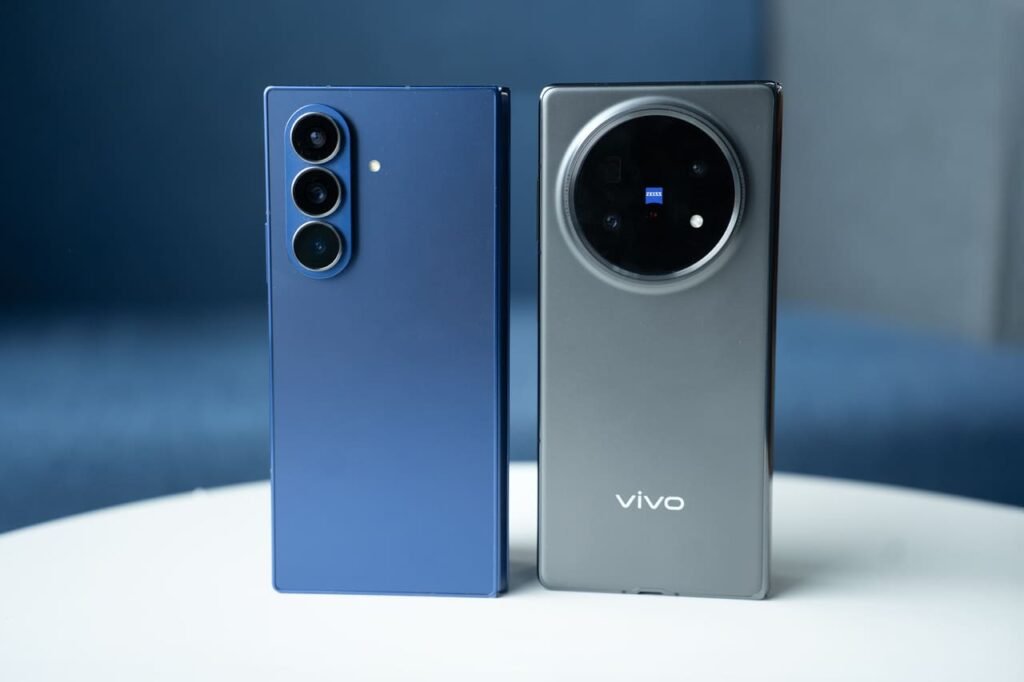
1 Comment
Pingback: Samsung Galaxy Flip 7 Review: To Flip or Not to Flip?